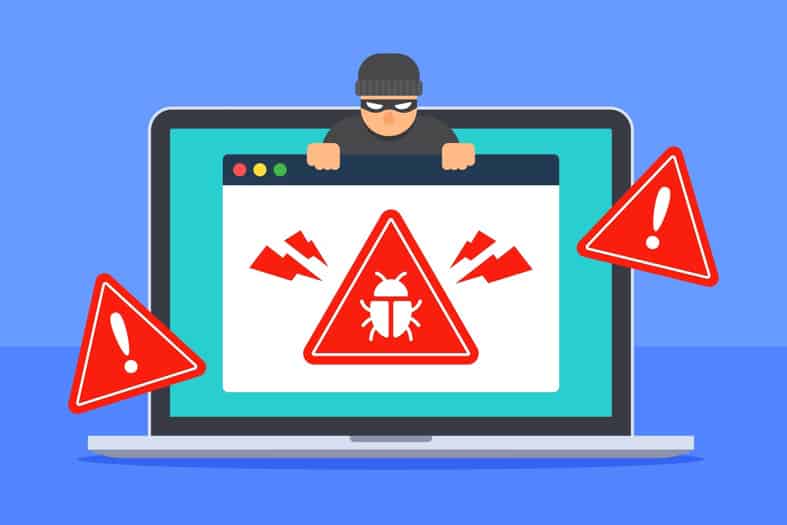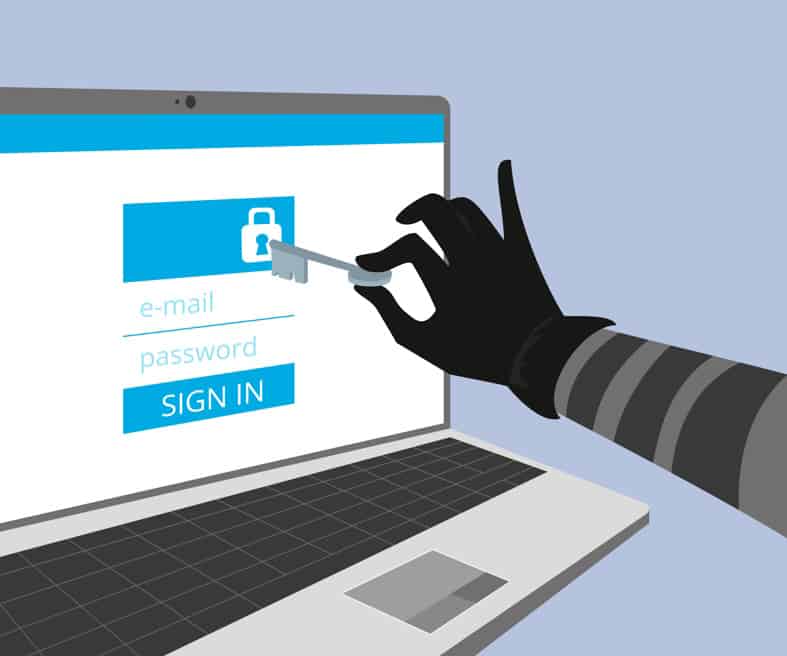
Table of Contents
What Is a Browser Hijacker?
Browser hijacking also known as browser redirect virus, is a type of malicious software that alters the settings of a web browser without the user’s consent, often redirecting them to hijacker’s search page and displaying intrusive advertisements. It is designed to manipulate the user’s browsing experience and generate revenue for its creators through various means, such as displaying ads or promoting certain websites. Browser hijackers can be installed on a user’s computer through deceptive methods, such as bundled with freeware or disguised as legitimate browser extensions. One common way of browser hijacking is changing the default search engine or homepage of the affected browser. This means that when users perform a search using their browser’s search bar, they are redirected to an alternative search engine that may display biased or misleading results. These results often prioritize sponsored content over organic search results, leading users to potentially unsafe websites.
Types of Browser Hijackers
Below are different browser hijacker examples:

RocketTab
RocketTab is a potentially unwanted program that installs as a browser extension and displays intrusive advertisements to users. It falls under the category of browser hijacking, where unauthorized changes are made to web browser settings without the user’s consent. Once installed, RocketTab modifies the user’s default search engine and homepage settings, redirecting searches through their own search engine. This can lead to altered search results and an influx of sponsored ads displayed on webpages. The installation of RocketTab typically occurs without the user’s knowledge or explicit permission. It often comes bundled with other free software downloads, making it easy for unsuspecting users to accidentally install this unwanted software.
Ask Toolbar
The Ask Toolbar is a potentially unwanted program that can be installed as a browser extension, altering web browser settings and displaying intrusive advertisements to users. It is often bundled with other software downloads and may be installed without the user’s knowledge or consent. Once installed, the Ask Toolbar changes the default search engine and homepage of the affected browser, redirecting searches through its own search engine. This can lead to a compromised browsing experience as users may not get accurate search results.
GoSave
GoSave is a malicious browser extension that primarily targets popular web browsers such as Google Chrome, Mozilla Firefox, and Internet Explorer. Once installed, it alters the default search engine settings without user consent or knowledge. Instead of using legitimate search engines like Google or Bing, GoSave forces users to utilize its own customized search engine. One of the most concerning aspects of GoSave is its ability to redirect users to potentially dangerous websites. These sites may contain malware or attempt to scam unsuspecting victims by tricking them into revealing sensitive information. Moreover, this browser hijacker often injects unwanted ads into web pages visited by users, causing annoyance and disruption while browsing.
Coupon Server
Coupon Server is a potentially harmful program that infiltrates web browsers and manipulates users’ online shopping experiences. It falls under the category of browser hijacking, where unwanted software takes control of an internet browser without the user’s consent. Coupon Server typically enters the system through bundled downloads or deceptive advertisements, tricking users into installing it unknowingly. Once installed, it injects unwanted ads into web pages visited by the user, displaying numerous pop-ups and banners advertising various coupons and deals. The main purpose of Coupon Server is to generate revenue for its creators through affiliate marketing. It modifies search queries and alters search results to display sponsored links that generate income when clicked on. This not only disrupts users’ browsing experience but also puts their privacy at risk as Coupon Server collects information about their online activities.
CoolWebSearch
CoolWebSearch is a browser hijacker that infiltrates web browsers and disrupts users’ online experiences by injecting unwanted ads, modifying search results, and potentially exposing them to security risks. This malicious software often gets installed on users’ computers without their knowledge or consent through deceptive tactics such as bundling with other free software or masquerading as a legitimate browser extension. Once installed, CoolWebSearch takes control of the user’s web browser and starts redirecting them to websites filled with advertisements or even phishing sites.
Symptoms of Browser Hijacking
Here are some common ways how to know if someone hijacked your browser:
Changed Homepage
The change in the user’s browser homepage means it has been altered without consent. Instead of your preferred homepage, you are directed to a different website.
Modified Default Search Engine
Your default search engine may have been changed to a different one, often a lesser-known search engine that displays sponsored or irrelevant search results.
Unwanted Toolbar or Extensions
New browser toolbars, add-ons, or extensions may appear without your permission. These may be designed to monitor your activities or display ads.
Frequent Pop-up Ads
You start seeing an excessive number of pop-up advertisements, even when you’re not browsing specific websites.
Unintended Website Redirects
You are redirected to suspicious websites that you didn’t intend to visit, especially when clicking on search results or links.
Risks of Browser Hijacking
Browser hijacking can lead to various risks and potential dangers for users. Here are the key risks associated with browser hijacking:
Privacy Invasion
Browser hijackers can track your online activities, including the websites you visit, search queries, and personal information, leading to a significant invasion of your privacy.
Identity Theft
Browser hijackers may collect sensitive data such as login credentials, credit card information, and personal details, which can be used for identity theft and financial fraud.
Exposure To Malicious Content
Hijacked browsers may redirect you to malicious websites that distribute malware, viruses, or other harmful content, putting your system and data at risk.
Financial Loss
Browser hijackers often display deceptive advertisements or redirect you to phishing websites, where you might unwittingly provide financial information and suffer financial losses.
Degraded Browsing Experience
Hijacked browsers may display excessive ads, pop-ups, and unwanted content, leading to a frustrating and unpleasant online experience.
How To Prevent Browser Hijacking
To effectively prevent browser hijacking, users must implement proactive measures to safeguard their online privacy and security. There are several steps that individuals can take to protect themselves from this type of cyber threat:
Keep Your Browser Up to Date
Regularly updating your web browser is crucial in preventing browser hijacking. Browser updates often include important security patches that address vulnerabilities exploited by hijackers. Also, your operating system should always be up to date.
Install a Reliable Antivirus Software
Antivirus software can detect and remove malicious programs that may lead to browser hijacking. It is essential to choose a reputable antivirus program and keep it updated to ensure maximum protection.
Disable Unnecessary Plugins and Extensions
Some plugins or extensions might have vulnerabilities that can be exploited by hijackers. Disable any plugins or extensions that you do not use regularly or trust implicitly.
Avoid Suspicious Links and Downloads
To further enhance the prevention of browser hijacking, it is essential to be cautious when encountering suspicious links and downloads.
Use a Secure Browser
One popular choice for a secure browser is Internet Explorer, which offers various security features to safeguard user data. Internet Explorer has built-in tools that help detect and prevent malicious activities such as browser hijacking. It includes a SmartScreen Filter that warns users about potentially harmful websites and blocks the download of suspicious files. Additionally, Internet Explorer regularly releases updates and patches to address any vulnerabilities, ensuring that users have the most up-to-date protection against emerging threats.
Disable JavaScript
Disabling JavaScript on untrusted websites can be an effective measure to mitigate potential security vulnerabilities and minimize the risk of unauthorized browser manipulations. JavaScript is a programming language that allows web developers to create interactive elements on web pages. However, it can also be exploited by malicious actors to redirect users to harmful websites or deceive them into downloading software without their consent.
How To Remove Browser Hijackers
Removing browser hijackers can be a bit tricky, as some of them can be persistent and may hide deep within your system. Here are general steps on how to fix browser hijacking:
Run an Antivirus and Anti-Malware Scan
Start by running a full system scan using reputable antivirus and anti-malware software. These tools can detect and remove many common browser hijackers.
Use Anti-Malware Removal Tools
Consider using specialized anti-malware removal tools that specifically target browser hijackers. Popular options include Malwarebytes, AdwCleaner, and HitmanPro.
Update Your Browser and Extensions
Ensure your web browser is up to date and update all installed extensions or add-ons. Outdated software can have vulnerabilities that browser hijackers exploit.
Remove Suspicious Extensions
Go to your browser’s extension or add-on manager and uninstall any unfamiliar or suspicious extensions. Pay special attention to toolbars or add-ons you did not intentionally install.
Frequently Asked Questions
Can Browser Hijackers Steal My Personal Information?
Browser hijackers have the potential to steal personal information, including login credentials, financial data, and browsing history. They exploit vulnerabilities in browsers to gain unauthorized access and collect sensitive data for malicious purposes.

How Can I Tell if My Browser Has Been Hijacked?
Determining if your browser has been hijacked can be done by observing sudden changes in the homepage and search engine, frequent pop-up ads, slow performance, new toolbars, or extensions added without permission.
What Is the Difference Between a Browser Hijacker and a Virus?
Browser hijackers and viruses are distinct types of malware. While viruses infect and replicate within a computer system, browser hijackers specifically target web browsers, altering settings and redirecting users to unwanted websites without their consent or knowledge.
Can Browser Hijackers Affect Other Devices on My Network?
Browser hijackers have the potential to affect other devices on a network. Through various techniques, such as DNS hijacking or exploiting vulnerabilities in routers, they can redirect traffic and compromise the security of connected devices.
Conclusion
Browser hijacking is a pervasive problem that poses significant risks to internet users worldwide. By understanding the different types of hijackers and implementing preventative measures like removing unwanted toolbars and being cautious with downloads, individuals can enhance their online safety. Moreover, regularly updating one’s system software ensures the latest security patches are in place to defend against emerging threats. Ultimately, staying vigilant and proactive in safeguarding one’s browser is paramount in today’s digital landscape.

